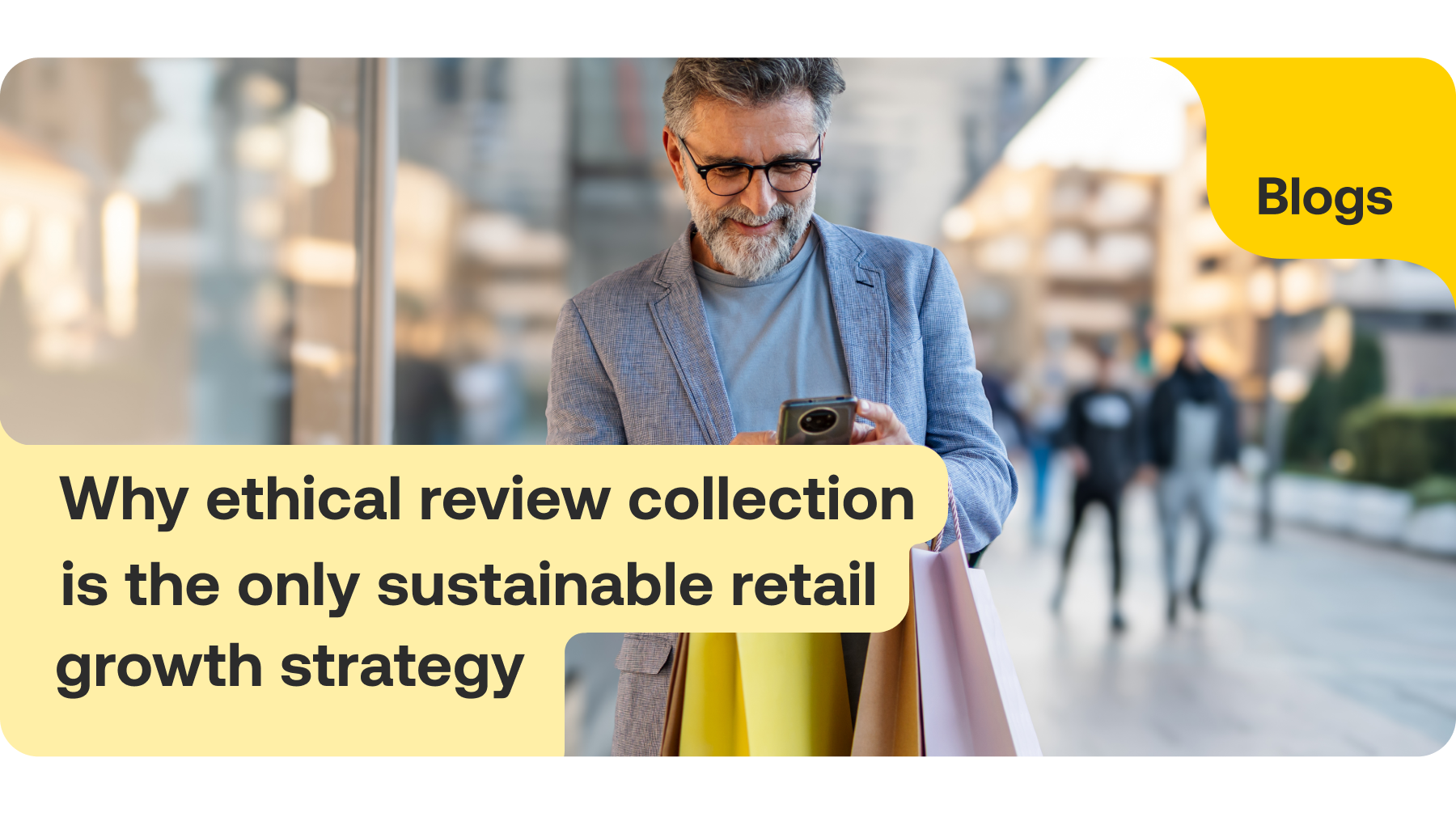The ‘and’ landscape, emotional spending and how US shoppers are spending more cautiously.
In this article:
Much has been written about consumer trends in retail, particularly in a post-pandemic world. In the US, a recent report from McKinsey has revealed a complex landscape where shoppers are navigating between essential spending and indulgence, leading to nuanced changes in purchasing behaviour.
Despite steady consumer confidence, there's a notable shift towards cautious spending, reflected in decreased purchases per trip across various categories. This poses a number of challenges for retail brands in particular, as consumers seek affordability without compromising on indulgence. McKinsey's findings indicate a preference for authenticity and emotional connections, driving the importance of understanding consumer motivations.
As consumers prioritise essentials while splurging on treats, brands must adapt by fostering loyalty and engaging in genuine interactions with customers. Social media and online channels play a crucial role in influencing purchasing decisions, highlighting the need for brands to curate authentic experiences and leverage user-generated content. Amidst economic uncertainties, brands that prioritize customer-centric strategies and cultivate brand advocates are poised to thrive in an evolving consumer landscape.
In this article, we explore these themes in greater depth
The rise of the cautious consumer
US consumers are shifting their purchasing behaviours, spending more but buying less. US CPG volume declined 2 to 4 per cent on average. Items purchased per trip declined by 3 to 5 percent across grocery, health and beauty, and household categories, while shopping frequency remained the same or increased. This shift, though subtle, can have big implications for retail and consumer-packaged goods (CPG) brands.
It’s clear that purse strings are being tightened on essential items, from groceries and vitamins to holidays, but consumers are determined not to miss out, with an increase in emotional spending and impulse buying. They’re spending less on household necessities like food but splurging on meals out in restaurants. Or trading down, buying cheaper and buying less on the basics, but continuing to indulge in luxury goods. Consumers want it all – affordable essentials and treat items.
It creates a confusing landscape, especially for retail or CPGs. The key to survival is understanding why the behaviour is shifting and ensuring your brand is at the forefront of consumers' minds when it's time to purchase. How do you do that? Listening to your customers and employing authenticity as a brand value is one way to survive.

Splurge mentality
The McKinsey Consumer Wise Global Sentiment Data discovered that as inflation remained high, consumers indicated they’d spend cautiously and prioritise essentials such as baby supplies and gasoline, while reducing spend on semi-discretionary items, such as skin care and vehicles. 46% of people asked said they planned to spend less on jewellery and 36% said they’d spend less on footwear in the next three months.
That said, many consumers reported planning to purchase treat items, with Gen-Z’ers expressing the highest intent to splurge in the next three months (63% Gen-Z versus 38 per cent overall). Consumers expressed an even higher intention to splurge on dining out than any other category, with 38% of all respondents saying they intend to spend more money on dining out, going to restaurants or bars.
It's not always easy to pinpoint what’s fuelling a shift in consumer behaviours, though price is clearly an aspect that’s affecting decision-making. Reasons that consumers gave for reducing purchase volumes of groceries include:
- Price increase – 78%
- Waiting for items to go on sale – 50%
- Can’t afford as much as they used to due to economic reasons – 41%
With each price increase and additional economic pain points, the pressure is on brands to prove their worth and offer customers a valuable exchange that satisfies their high-consideration purchase.
The ‘yes, and’ consumer and how to make sure they pick you
Consumers may be tightening their purse strings when it comes to essentials, but they’re not willing to sacrifice the enjoyment of luxury items or treats. With each purchase costing more on average and inflation on the rise, they want to make sure they’re making the right purchasing decisions. People are still willing to purchase, they just want to make sure it’s going to be the right purchase for them.
That’s where the value of authenticity, connecting your customers and listening to their feedback comes in. Verified reviews can offer all three of these. Feedback from genuine customers who’ve engaged with your brand provides insights not just to you as a brand but to other people just like them about the nuances of what they love about your product or brand.
Amongst other strategies that McKinsey recommends for CPG players to combat volume declines, they cite investing in building brand loyalty saying that:
“While it may be tempting to step back from wide-ranging brand marketing to focus solely on performance marketing, where sales impact is often directly measurable, consumer goods companies should still invest in consumer acquisition and loyalty. Building “brand love” may be the best way to entice cautious consumers to add items to their physical and digital shopping carts.”
The conversations you can’t reach
Discovery on social media and online channels hasn’t gone away. Consumers are stepping away from bricks and mortar and seeking online channels. 41% of Gen Z and millennials make an impulse purchase online every 2-3 weeks, rising to 48% daily in TikTok users. It opens the door to more impulse, emotion-led purchases, which is where the most powerful heuristic comes into play. 79% of people are more likely to choose a brand at the consideration stage if they have high brand awareness, which makes it vital for brands to get their customers talking about them. And 43% of consumers are more likely to buy a new product when learning about it from friends on social media. People, more than ever, are looking for like-minded others to guide them in their purchasing decisions. They no longer want to find out about a product directly from the brand. They want to hear from people like them with needs like theirs.
This makes it all the more vital for brands to take control of their reputation and showcase themselves as an authentic brand – from responding to negative reviews to making valuable changes based on customer feedback. Displaying verified, authentic user-generated content in reviews and giving your customers social proof where they need it the most can boost your brand recognition and reputation in the conversations you can’t reach. Brands can also support consumers internet research stage by hosting features such as Q&A next to their online products, where their experts can answer consumers pre and post purchase questions.
While consumers prefer to make their purchases online, it does have its downsides. Ever heard of the phrase try before you buy? Shoppers can’t do that online. While many shoppers overcome this by buying to return (trying it on and sending back what they don’t need), this isn’t a suitable solution for retailers who will lose profit. That’s where verified, unfiltered customer feedback comes in handy. Honest comments from real-life people who have the same concerns as you when it comes to the nuances of the fit, for example. Feefo’s verified reviews model and additional features that enable brands to run sentiment analysis on their customer comments, or display reviews by common themes on their websites, can help provide this sense of community to online consumers’ seeking pre-purchase advice.
Americans are 23% more likely to value authenticity than the global average
Provide a Value Exchange
It’s harder for today’s consumers to part with their hard-earned cash. That means brands have to work much harder to prove their worth – whether that’s with values that resonate with their consumers, such as sustainability initiatives, with a desirable price point or high demand product, or lastly, proving themselves as a customer-centric company.
Brands looking for real, lasting value that’ll help them grow would be smart to focus on becoming customer centric. But how do they do this? Easy: listen to your customers, respond and make real, valuable changes based on the insights you gain. Don’t just respond to the positive, address the negative, listen to what your customers are truly telling you and give them a response that they feel truly satisfied with.
At Feefo we believe the strongest tool to engage your customers and create loyal brand advocates is with a Value Exchange. It means offering something of value back to your customers. Do you want their data? Show them why their voice matters. Do you want their insights? Show them you’re listening to what they value. Do you want their comments on your products and services? Don’t just listen, act. Your customers want to help others like them gain the insights that helped them make their purchase, but why should they? Give them the place to share their views, show them you care, but more importantly, show them how their feedback is making a difference to your business and customers alike.
Build brand love
Your existing customers are more likely to repeat purchases than new customers. And, if you’re able to turn a repeat customer into a loyal advocate they’ll be doing much of your marketing work for you, sharing and celebrating your wins with their biggest fans. 79% of companies that create brand advocates see an increase in cross-selling and upsell figures, and 50% of all buying decisions are driven by peer-to-peer marketing.
How can you use advocates in your marketing tactics?
- Your advocates are micro influences. Their feedback is altruistic, and they will always have a more powerful impact than paid influencers. Ensure you’ve got the tools to give your advocates space to discuss your brand and engage with their community
- Embrace user-generated content. By encouraging customers to share their experiences with a brand, companies can create a library of content that can be used to promote their products or services across consumer platforms like social media.
It’s also great for SEO. - Be in control of your reputation. Empowered consumers can make or break a brand’s reputation. By creating advocates, businesses can improve their online reputation by generating positive reviews and ratings.
Surviving a shift in trends
As consumer confidence increases and economic uncertainty lessens, we may well see the number of consumer purchases increasing once again. But brands that want to stay ahead of the game, especially consumer-packaged goods players and retailers, need to engage tactics to soar ahead in a landscape where consumers are making greater emotive purchase decisions. Thinking about how they can use advocacy and customer feedback to generate brand love is the only way to win.




